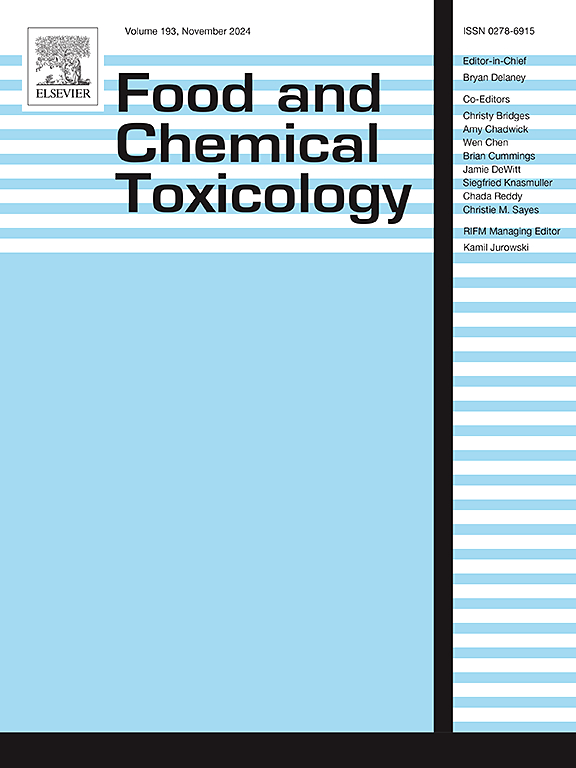Oral exposure to nanoplastics altered lipid profiles in mouse intestine
IF 3.9
3区 医学
Q2 FOOD SCIENCE & TECHNOLOGY
引用次数: 0
Abstract
The wide uses of plastics lead to nanoplastic exposure in reality. Previous studies reported that micro- and nano-plastics (MNPs) disrupted metabolism, but few studies investigated lipid profile changes. Hereby, we exposed mice to vehicles (control), 0.05 or 0.5 mg/kg 20 or 100 nm nanoplastics via gavage, once a day, for 14 days. Albeit no obvious tissue damage, lipidomics data revealed 76 up-regulated and 29 down-regulated lipid molecules in mouse intestines. Further analysis revealed that a number of up-regulated lipid molecules belong to glycerophospholipid (GP). Among GP, we noticed an up-regulation of 9 phosphatidylserine (PS) molecules, and we further verified the presence of autophagosomes and co-localization of typical autophagic lipolysis proteins in intestinal sections, as well as decreased lysosomal associated protein 2 (LAMP2) and increased adipose triglyceride lipase (ATGL) in intestinal homogenates, indicating perturbed autophagic pathway. The exposure also up-regulated 9 phosphatidylinositol (PI) molecules, and we verified a significant decrease of 3-hydroxy-3-methylglutaryl-CoA reductase (HMGCR), indicating altered PI3K-signaling pathway. Besides GP, nanoplastics also significantly up-regulated some sphingolipids (SP), such as ceramide (Cer), and some sterol lipids, such as cholesterol derivatives. Combined, these results suggested that oral exposure to nanoplastics altered lipid profiles and related signaling pathway in mouse intestines.

求助全文
约1分钟内获得全文
求助全文
来源期刊

Food and Chemical Toxicology
工程技术-毒理学
CiteScore
10.90
自引率
4.70%
发文量
651
审稿时长
31 days
期刊介绍:
Food and Chemical Toxicology (FCT), an internationally renowned journal, that publishes original research articles and reviews on toxic effects, in animals and humans, of natural or synthetic chemicals occurring in the human environment with particular emphasis on food, drugs, and chemicals, including agricultural and industrial safety, and consumer product safety. Areas such as safety evaluation of novel foods and ingredients, biotechnologically-derived products, and nanomaterials are included in the scope of the journal. FCT also encourages submission of papers on inter-relationships between nutrition and toxicology and on in vitro techniques, particularly those fostering the 3 Rs.
The principal aim of the journal is to publish high impact, scholarly work and to serve as a multidisciplinary forum for research in toxicology. Papers submitted will be judged on the basis of scientific originality and contribution to the field, quality and subject matter. Studies should address at least one of the following:
-Adverse physiological/biochemical, or pathological changes induced by specific defined substances
-New techniques for assessing potential toxicity, including molecular biology
-Mechanisms underlying toxic phenomena
-Toxicological examinations of specific chemicals or consumer products, both those showing adverse effects and those demonstrating safety, that meet current standards of scientific acceptability.
Authors must clearly and briefly identify what novel toxic effect (s) or toxic mechanism (s) of the chemical are being reported and what their significance is in the abstract. Furthermore, sufficient doses should be included in order to provide information on NOAEL/LOAEL values.
 求助内容:
求助内容: 应助结果提醒方式:
应助结果提醒方式:


